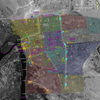
Featured Blog | This community-written post highlights the best of what the game industry has to offer. Read more like it on the Game Developer Blogs or learn how to Submit Your Own Blog Post
Six Days in Fallujah's Campaign
The mission arc in Six Days in Fallujah went through several drafts. Here's a glimpse at threading the real life events into meaningful paced encounters.

If Six Days in Fallujah is ever in production again, the following information won’t spoil the game for you. All the material used here is public knowledge gathered through printed resources and online sources. The magic of the experience was how this information was presented (along with the realistic tactics, honest language, and destruction).
Any new development will refactor all the material to suit current needs, scope, and climate.

Points of Reference
To recreate the real events for Six Days in Fallujah (SDIF) the team needed to know as much as they could about the Battle. Early on, several Marines worked directly with the team to share as much information as they could. Later in 2009, more Marines contributed further to the authenticity. Captain Read Omohundro’s (U.S. Marine Corps, retired) guidance was invaluable to the project.
When I joined the project earlier, it already had a wealth of raw information, such as which Marine company traveled which Phase Line and how larger events affect the House-to-House orders. I did my own research and found even more material as well as locating several key locations based on different written accounts.
Piecing together this information was more challenging a decade ago than it would be now. The Battle was only a handful of years old and fewer things had been contributed to the internet or print beyond news highlights.

Fig 1: Marine activity and landmarks

Fig 2: Insurgent activity
With the physical locations known, the next step was determining which Marine accounts and news reports had a story to tell at each point-of-interest. Several books provided vivid details of victory, tragedy, and fortitude. Some of those were:
That information became the basis for missions in SDIF.
 Fig 3: A sample of accounts in the Battle.
Fig 3: A sample of accounts in the Battle.
Campaign History
As with any game production, the original goals evolve over time. These typically involve some form of scope-reduction to help focus the project and elevate quality over quantity. Over the course of four years, SDIF went from 30 missions to 8.
2005 Version
The original campaign for SDIF had 5 missions for each of the 6 Days — 30 levels total. The game world was based on the actual city, so each gamespace was huge, at roughly 40,000 game units (most tactical shooters feature less than half of that).
Vehicles were the remedy for this scale. My impression was a game that rivaled GTA in scope and complexity.
2007 Version
Reality checked in and the campaign was reduced to 19 missions. With the exception of the 1st Day, each Day now featured 3 missions each. Vehicles were relegated to special cases or as backdrop. No freeform driving allowed.
The gamespaces themselves were reduced in size as well, shrinking down to a manageable 12-20,000 game units (the size of an Uncharted Level if folded into a sandbox). This change allowed the team to have more control with moment-to-moment action. At the original scale, the only way to populate non-critical areas would’ve been procedurally, which risked being repetitive and uninspiring.
2008 Version
The third iteration occurred when the project moved to Raleigh. The total missions were only reduced by one, but the scale of each gamespace was downsized to 10-12,000 game units (somewhere in the ballpark of a Gears of War level). The change was due to technical reasons. With all of the sheer destruction we were estimating, anything larger wouldn’t fit in tech performance or memory.
2009-Q1 Version
When Konami entered the picture in early 2009, the project was now bound to a schedule. To ship in 2010, SDIF was reduced to 12 levels. Their physical size remained the same. Each Day had 1-3 missions. Each mission was to be introduced and/or followed by an interview with a Marine who was there.
Previously scope-reduction hadn't disrupted the highlights, events, or people met in the game. During this last change however, I had to start picking the best events and put aside less dynamic ones. Like previous versions, the experience featured 2 Fire Teams (mixed with real Marines) the player switched to depending on the location and event.
 Fig 4: Twelve Konami Mission Locations
Fig 4: Twelve Konami Mission Locations
Train Station + HH
Jolan Entry
Culture Center
Jolan Park + HH
Jolan Pizza Slice
Jolan Market
Candy Store + HH
Resala Cemetery
Nazal Clearing
Nazal Besieged + HH
Phase Line Henry
Hell House
 Fig 5: Jolan's "Pizza Slice" termed by Marines there.
Fig 5: Jolan's "Pizza Slice" termed by Marines there.
Glimpses of Chaos
This campaign happened to be my favorite version. It had the right amount of distinctive events and variety to make the experience dynamic and memorable. One thing that set it apart from the other versions were several detached sequences that took place before each Day began. The player was thrown into the middle of intense situations lasting 60-120 seconds, playing a different Marine each time.
In contrast to regular Campaign pacing, there were no tutorials or forgiving second-chances, no reloads. Experienced players would be quick on their feet, recognizing their position and gear. Inexperienced ones would be caught in the chaos and fear of the moment. You dealt with whatever the outcome was. Did you survive? Were you wounded? Did you save your team?
Order Revealed
When players began the final level of the game, they would realize those sequences were flash-forwarding to this final location. Familiar buildings, sights, and sounds from those frantic moments were now all connected.
Several Fire Teams were present during Hell House. Each flash-forward recorded your choices and assigned them as goals to supporting AI Marines. They now retraced your decisions while your own Fire Team attempts to suppress the conflict.
In a multiplayer session, each player would experience these flashes individually. The game would randomly choose which “recording” to use, based on the number of participants in the final level. When the game was complete, players were allowed to replay these series of events and attempted a different outcome.
Like the rest of SDIF, this feature was not meant to trivialize the tragedies or heroism of the Marines who were there. It was developed to teach players the choices and reality of war. Training simulations have been doing this for quite some time. SDIF was an attempt to add an emotional narrative within in a high-quality product.
Pacing Chart
To give players a satisfying experience in any game, you need a stage for each feature to shine. It lets the players recognize the unique aspects it offers without pushing several new features at the same time (a lot of games do this).
My pacing chart was a way to maintain a bigger picture and how each feature had its moment in the spotlight. This also insured each encounter offered something slightly more new than the last one. No encounter was just there for the sake of combat (another thing a lot of games do).
When a new feature was introduced, it typically occurred this way:
Sneak Peak | Let the player see it from a distance. This builds desire. Items have more value if you work for it, rather than given freely. For example, witness a different Fire Team use an RPG to collapse a building first. |
|---|---|
Full Intro | The player is given full control over the feature in a safe encounter built specifically for it. This lets the player digest the new item at their own pace to understand its advantages. For example, lobbing a grenade around a corner to remove a Fatal Funnel because direct fire isn’t an option. |
Full Use | From here on out, the player is fully aware of the feature and can mix and match how he uses it in future encounters. |
Some variations exist beyond those core points:
Limited Use | Similar to a Full Intro, but more loose. Sort of a taste of what he might be able to use more frequently later. This also encompasses fixed location events (such as a turret). |
|---|---|
Last Use | Is a feature never going to be used in the game again? It should have a special moment devoted to its final appearance. When involving characters, this doesn’t necessarily mean death. |
Could UseNot Used | Something I added later to prevent the mission team from using every feature available. By limiting some features, it clarifies gameplay choices and increases desire for missing features. |
When the team began a new mission, they could read the event's column and know immediately what they should focus on in their encounters. Reviewing what happened immediately before and after the mission helped influence their designs.
 Fig 6: Pacing the weapons, enemies, and game types
Fig 6: Pacing the weapons, enemies, and game types
 Fig 7: Layering in the narrative and events
Fig 7: Layering in the narrative and events
The Action and Fear chart was something I learned from Turok. It helps the story arc maintain a rhythm of emotional highs-and-lows. The remainder of the information pictured was how real events were applied to each mission. They either directly influenced the encounter(s) or provided bookend moments between them.
2009-Q3 Version
The last change reduced the game to a total of 8 levels, with only 1 Fire Team. The individual scenarios would be based on the real events, but the transitions between them would be an mixture of anecdotal moments from interviews and written accounts. The player would continue to meet real Marines throughout the game, but they wouldn't be playing with them.
 Fig 8: Eight post-Konami Mission Locations
Fig 8: Eight post-Konami Mission Locations
Jolan Entry
Culture Center
Jolan Pizza Slice
Candy Store
Nazal Clearing
Nazal Besieged
Resala Market
Queens Rally
Conclusion
When SDIF was first announced, modern warfare in mainstream games were still relatively new. Since 2009, it’s been full embraced (some would say exploited to sell more games). I hope the stories behind SDIF are presented in some meaningful way in the future. If production was restarted, technical concerns and controversial issues would be less of an issue now. SDIF was always about the real people and their stories, rather than flashy explosions and body count.
This post originally appeared on my website at CuriousConstructs.com where you can find larger versions of these images.
Read more about:
Featured BlogsAbout the Author(s)
You May Also Like







.jpeg?width=700&auto=webp&quality=80&disable=upscale)








